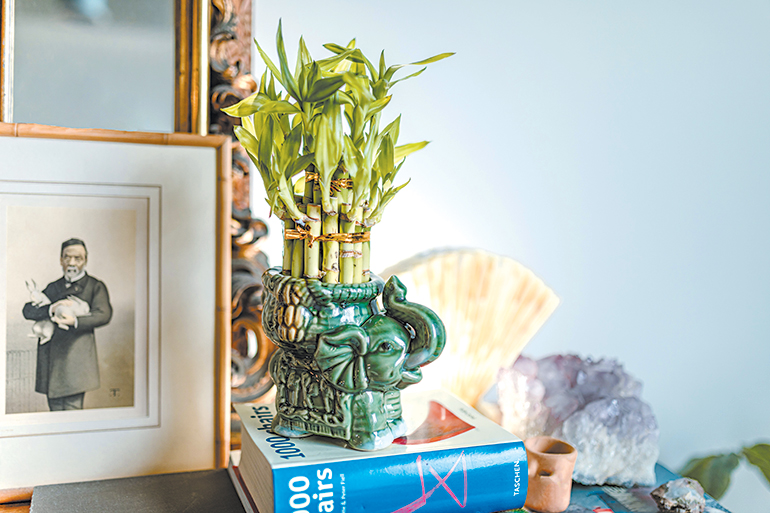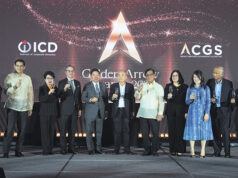All you need to know about feng shui for the Year of the Water Rabbit

Due to the country’s substantial Chinese and Filipino-Chinese population, feng shui is as part of Filipino culture as Christianity or English proficiency. It is something of a historical holdover from times even before the rule of the Spaniards.
Feng shui is a traditional practice that tries to understand the energy forces of the environment. As an ancient art that literally translates to “the way of wind and water,” it is one of the ways the early Chinese civilization attempted to make sense of the universe’s chaos.
It centers on the Taoist view that everything contains chi — a life force regulated by the diametrically opposed yet complementary energies of yin and yang — as the foundation for the practice. According to Taoist theory, people can increase the flow of chi in their life and keep bad chi at bay by balancing yin and yang within themselves and their surroundings.
Feng shui is thus the art of arranging spaces, furniture, and things in a space to create harmony and balance between yin and yang.
Little is known about the beginnings of feng shui, but popular historical consensus is that the ancient Chinese may have used feng shui principles to construct their cities and dwellings over 4,000 years ago. The placement of ancient Chinese grave sites — areas where conveying good chi was crucial — provides some of the earliest examples of feng shui.
People all throughout the world utilize feng shui principles to adorn their homes, carrying on the tradition with the overall goal of creating and maintaining this delicate balance between yin and yang energies, and assisting the flow of chi throughout the home or office.
Assisting the flow of wind and water
In feng shui, the goal is to create sheng chi, or an atmosphere that is conducive to good fortune. ‘Sheng,’ which means upward flowing energy, is thought to produce a sense of health and well-being, the same positive energy that one might have while communing with nature by taking a walk through a forest, by a waterfall, on a mountainside, or by the ocean.
Getting rid of clutter inside and outside of your home or business is one of the numerous strategies to acquire sheng chi and recreate that feeling of well-being. This is due to the fact that an untidy and unorganized environment exudes si chi, a sluggish and stagnant energy. Si chi is a decomposing type of energy that gradually consumes its surroundings.
To lessen their degrading power, one should keep things like dust, garbage, waste, clutter, cobwebs, stagnant water, and other kinds of dirt away from one’s house and place of business.
Sha chi, on the other hand, is known as the “death energy” because of the way it stifles positive energy and stunts any progress. It may take the form of organic land formations, artificial structures, things, or locations like dead end streets, cemeteries, or bridges.
According to feng shui, direct energy flows that are narrow and quick carry a lot of sha chi, which carries positive energy out and swaps it out for bad energy.
A building or establishment located directly at the end of a straight street is constantly exposed to a cluster of bad energy. Similar to how lightning gets attracted to high points, sha chi is directly drawn to clusters like that. Sha chi can also be seen in sharp, angular corners, such as those found in towering buildings, steep cliffs, mountain summits, and acute roof angles.
This is why feng shui advises making walkways round rather than at straight angles and access roads to homes and buildings slightly twisting. As a result, negative energy is changed into positive energy.
The Year of the Water Rabbit
2023, the Year of the Water Rabbit begins on January 22nd (Chinese New Year) and ends on February 9th (Chinese New Year’s Eve) in 2024. In Chinese tradition, the sign of the rabbit represents longevity, harmony, and prosperity, and as such this year is expected to be filled with hopeful optimism that will serve as a welcome break after the past two tumultuous years.
Rabbits are portrayed in Chinese astrology as being delicate, calm, elegant, alert, quick, skillful, kind, patient, extremely responsible, and faithful to those around them. The Water Rabbit in particular is renowned for being kind, cordial, and easily adaptable to various situations.
In general, the lucky colors that will integrate the wood, fire, water, metal, and earth components of feng shui are azure blue, apple green, pearl white, fiery red, and royal yellow. Any feng shui-inspired trends in art, fashion, and interior design may be dominated by the wood and water aspects, specifically the lucky colors of green and blue.
Blue and green are also particularly noteworthy as they also represent popular depictions of planet Earth. Environmental stewardship has gained widespread popularity as a way to promote eco-friendly living, sustainable fashion and prospering on this world, and good fortune could specifically fall on those who integrate such values into their lives this year. — Bjorn Biel M. Beltran


